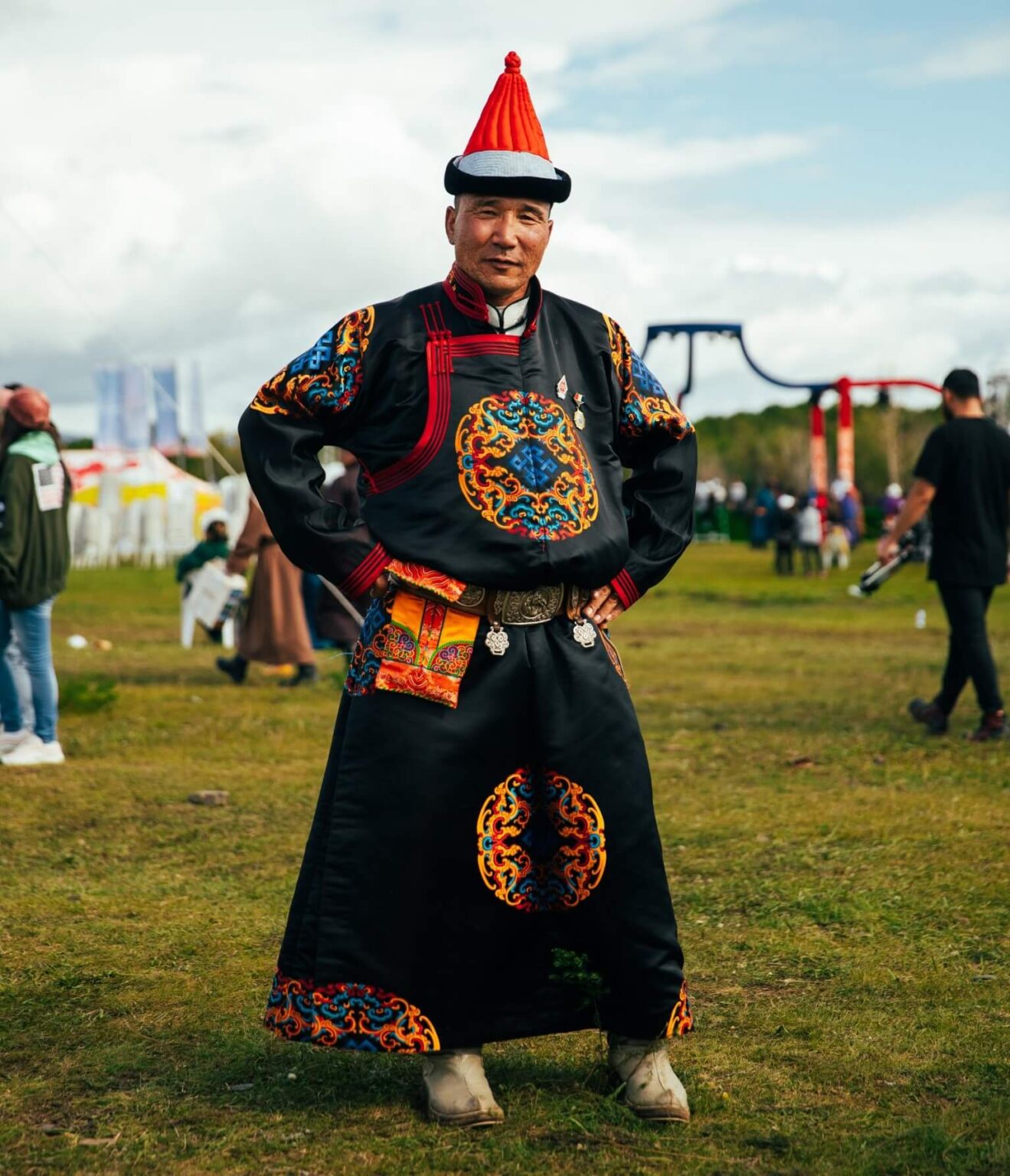Ever wondered how a single garment can embody a nation's history, withstand the harshest climates, and remain stylish for millennia? The Mongolian deel, a traditional robe, is more than just clothing; its a living testament to the resilience and ingenuity of the Mongolian people.
The Mongolian deel stands as a poignant symbol of cultural continuity, a tangible link to centuries of nomadic life. Its enduring presence in the face of societal shifts highlights its adaptability and enduring relevance. More than just a piece of clothing, the deel encapsulates a rich tapestry of history, practicality, and aesthetic beauty, firmly rooted in the Mongolian identity.
To properly understand the significance of the deel, we must first delve into its history and construction. Researchers posit its origins in the era of the Huns, placing its creation over a thousand years ago. This ancient lineage alone speaks volumes about its durability and enduring appeal. The deel's design has evolved, adapting to the nomadic lifestyle and the unforgiving Mongolian climate, proving its usefulness from the icy windswept steppes to the scorching summer sun.
- Best Remoteiot Platform With Free Ssh Key For Raspberry Pi
- Remoteiot Web Ssh Example Your Ultimate Guide To Secure Remote Access
But how does one, a newcomer to this rich tradition, approach the wearing of a deel? It seems simple enough, yet there's a specific process to follow to properly embody the elegance and grace of this iconic garment. The first step, and arguably the most critical, is the careful buttoning of all the buttons. These are located not only on the front but are most important at the neck and chest area, ensuring a snug fit that provides warmth and protection.
Each deel, regardless of style or make, comes with its own belt. This is not a mere accessory, but a crucial element in achieving the perfect silhouette and function of the garment. This belt, often a leather or woven band, is designed to be wrapped around the waist, cinching the deel to the body. It's a matter of personal preference as to how tightly the belt is worn, but it should be snug enough to define the waist and secure the robe.
A particularly interesting aspect of deel etiquette is the prohibition against exchanging belts. This practice speaks to the personal nature of the garment. The belt becomes an extension of the wearer, imbued with their personal essence, and therefore is a symbol of identity, not something to be swapped carelessly.
- Setting Up A Remote Iot Vpc Network With Raspberry Pi For Free
- How To Manage Remote Iot App For Free A Comprehensive Guide
The Mongolian deel is not just a piece of clothing; it's a portal into a world of history, tradition, and enduring style. It's a testament to the enduring spirit of the Mongolian people. As you slip into a deel, you're not merely dressing; you're becoming part of a story that spans centuries, connecting you to a culture that values resilience, adaptability, and the simple elegance of a garment perfectly suited to its environment.
During the socialist era and with the rise of urban movements, the deel underwent stylistic simplification. The core essence of the garment persisted, but its embellishments became less ornate, reflecting the changing times. Modern designers have taken inspiration from the deel's fundamental elements, transforming them into fresh, contemporary fashions, keeping the legacy of the deel alive.
In today's world, you can find the deel in a myriad of forms, from traditional designs to modern interpretations. Online retailers, local boutiques, and dedicated artisans offer a diverse selection, showcasing the versatility and enduring appeal of this historical garment. For instance, one might search for "Mens black deel shirt" and find modern variations blending traditional aesthetics with contemporary designs, sometimes priced at $165.00, with customer ratings reflecting satisfaction with their product.
The Mongolian deel remains relevant, adapting to the times while holding onto its essential charm. From the steppes of Mongolia to the modern streets of today's cities, the deel has kept its significant position within the lives of its people.
Here's a deeper understanding of the Deel:
| Feature | Description |
|---|---|
| Origin | Traced back to the era of the Huns, over a thousand years ago. |
| Purpose | Designed to withstand the demanding Mongolian climate and environment, suitable for nomadic life. |
| Basic Construction | A long, loose robe-like garment. |
| Wearing Process |
|
| Belts |
|
| Historical Evolution |
|
For further information, explore resources like the Wikipedia article on the Deel
- Hdmovies4u Your Ultimate Guide To Streaming Highquality Movies
- Free Raspberry Pi Remoteiot App Your Ultimate Guide To Iot Control


